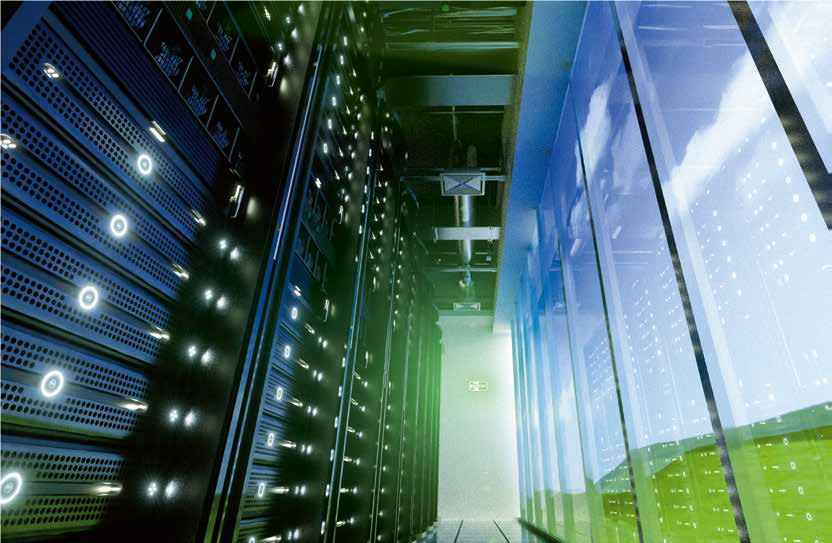Brian Johnson, ABB data centre segment head, explores how digitalisation is shaping the evolution of green data centres, and how it is possible to deliver both cost and energy efficiencies despite growing demand for data.
Even in the face of rapid digital acceleration, the vast proliferation of smart devices and an upward surge in data demand, data centres are only estimated to consume between one and two percent of the world’s electricity.
A recent study even confirmed that, while data centres’ computing output jumped six-fold from 2010 to 2018, their energy consumption rose only six percent.
That said, the need for additional data from society and industry shows no sign of stopping, so data centres need to find a way to meet this increased demand, without consuming significantly more energy.
The key to this is digitalisation. By digitalising data centre operations, data centre managers can react to increased demand without incurring significant additional emissions.
Running data centres at higher temperatures, switching to frequency drives instead of dampers to control fan loads, adopting the improved efficiency of modern UPS and using virtualisation to reduce the number of underutilised servers, are all strong approaches to improve data centre operational efficiency.
So, how can data centres deliver power and cost savings without compromising on performance? There are several actions that can be taken.
Digitalisation of data centres
One of the most recent developments has been the implementation of digital-enabled electrical infrastructure, including the use of sensors instead of traditional instrument transformers, which communicate digitally via fibre optic cables. This reduces the total number of cables by up to 90% vs traditional analog, and they also use low energy circuits, which increases safety.
The resultant digital switchgear can then be manufactured, commissioned and repaired much more easily thanks to both the sheer number of cables and the intelligent nature of the connections. Other innovations allow circuit protective devices to be configured wirelessly, and even change their settings when alternate power sources are connected.
Minimising idle IT equipment
There are several ways data centres can minimise idle IT equipment. One popular course of action is distributed computing, which links computers together as if they were a single machine. Essentially, by scaling-up the number of data centres that work together, operators can increase their processing power, thereby reducing or eliminating the need for separate facilities for specific applications.
Virtualisation of servers and storage
Undergoing a program of virtualisation can significantly improve the utilisation of hardware, enabling a reduction in the number of power-consuming services and storage devices. In fact, it can even improve server usage by around 40%.
A server cannot tell the difference between physical storage and virtual storage, so it directs information to virtualised areas in the same way. In other words, this process allows for more information storage, but without the need for physical, energy consuming equipment. More storage space means a more efficient server, which saves money and reduces the need for further physical server equipment.
Greater consolidation
Blade servers can help drive consolidation as they provide more processing output per unit of power consumed. Consolidating storage provides another opportunity, which improves memory utilisation while reducing power consumption. Some consolidation methods can use up to 90% less power once fully operational.
Managing CPU power usage
More than 50% of the power required to run a server is used by its central processing unit (CPU). Most CPUs have power-management features that optimise power consumption by dynamically switching among multiple performance states based on utilisation.
By dynamically ratcheting down processor voltage and frequency outside of peak performance tasks, the CPU can minimise energy waste.
Distribution of power at different voltages
Virtually all IT equipment is designed to work with input power voltages ranging from 100V to 240V AC, in accordance with global standards and the general rule is of course, the higher the voltage, the more efficient the unit.
That said, by operating a UPS at 240/415V three-phase four wire output power, a server can be fed directly, and an incremental two percent reduction in facility energy can be achieved.
Plugging into the smart grid
Smart grids enable two-way energy and information flows to create an automated and distributed power delivery network. Data centre operators can not only draw clean power from the grid, they can also install renewable power generators within their facility to become an occasional power supplier back into the grid.
In short, as many global economies push for net zero emissions over the next 30-40 years, the role of the ‘green’ data centre will become increasingly important.
There are several ways data centre operators can optimise efficiency without reducing performance – for further advice on safe, smart and sustainable digitalisation tactics which support the green data centre masterplan, visit: https://new.abb.com/data-centers


